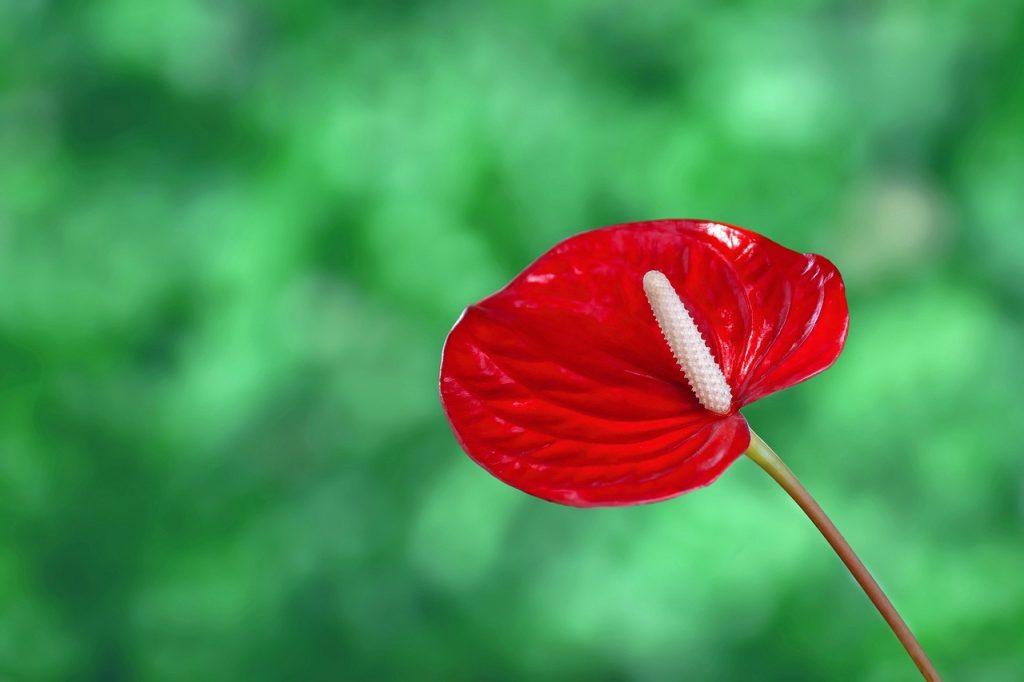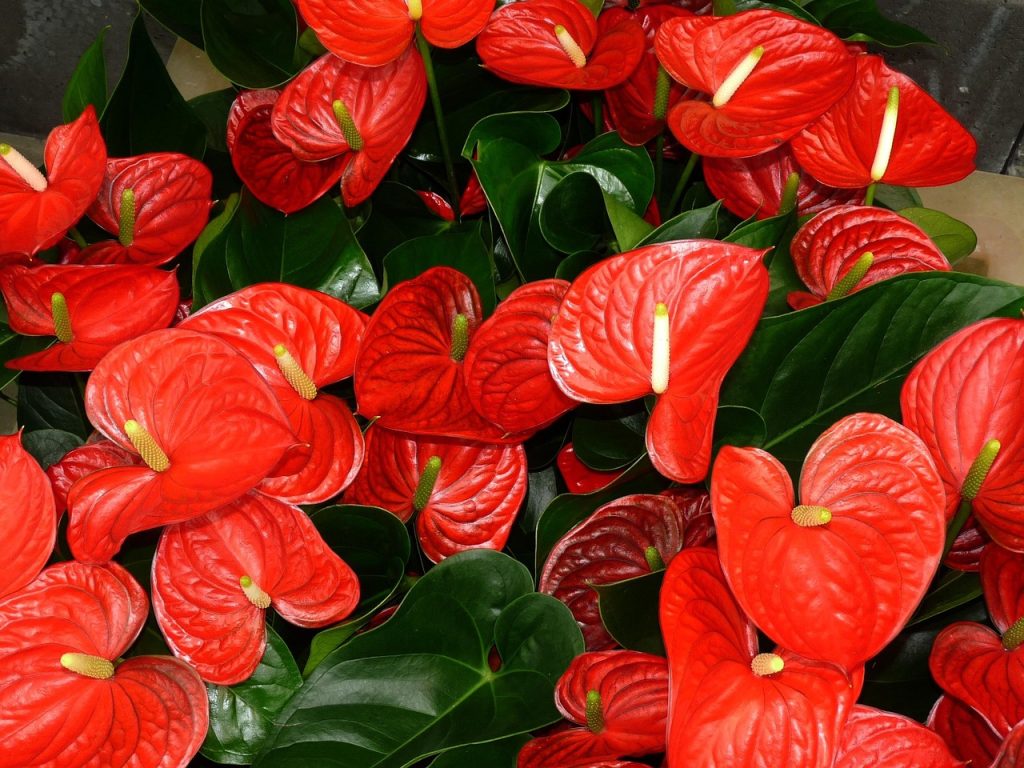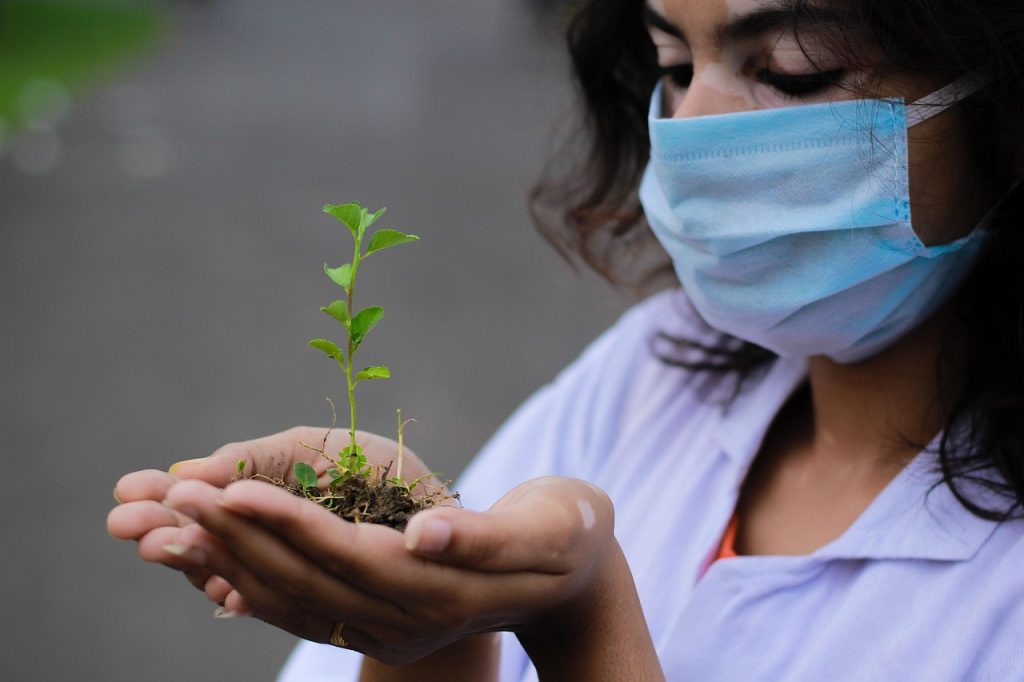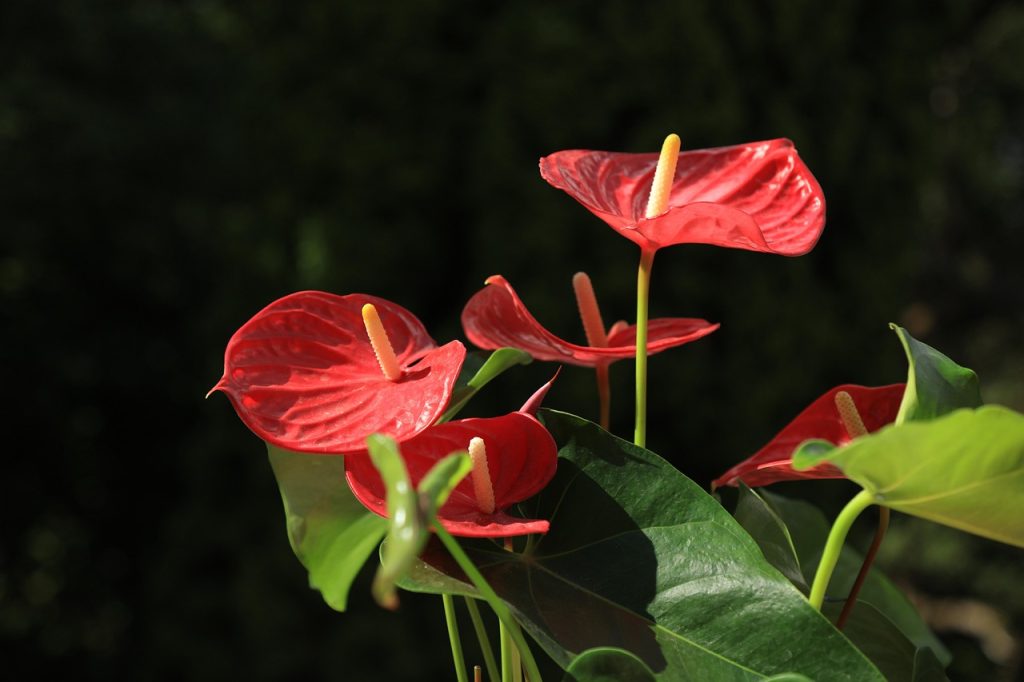Indoor gardening enthusiasts often find themselves drawn to the bold, heart-shaped blooms of the red anthurium plant, also called the Flamingo Flower or Laceleaf. Known for its glossy leaves and striking red spathes, this tropical houseplant adds elegance and color to any living space. But to keep it thriving year-round, proper red anthurium plant care is essential. This guide covers everything you need to know — from light and watering needs to soil, humidity, fertilizing, and long-term maintenance.

Quick Facts About Red Anthurium
- Scientific name: Anthurium andraeanum
- Common names: Flamingo Flower, Laceleaf, Painter’s Palette
- Native region: Central & South America (rainforest understory)
- Bloom color: Red spathes with yellow spadix
- Toxicity: Toxic to pets if ingested
- Lifespan: Can live for years indoors with proper care
Why Red Anthurium Plant Care Matters
Unlike low-maintenance succulents or snake plants, anthuriums are tropical plants that thrive under specific conditions. Neglecting proper red anthurium plant care often leads to yellowing leaves, poor flowering, or root rot. By understanding their natural environment, you can recreate the right conditions in your home and enjoy vibrant blooms for months.
Red Anthurium Plant Care Basics
1. Light Requirements
Red anthuriums prefer bright, indirect light. Direct sunlight can scorch the leaves, while low light reduces flowering.
- Place near an east- or north-facing window.
- Use sheer curtains to filter harsh afternoon sun.
- In low-light homes, supplement with grow lights.
2. Watering
Watering is one of the most crucial elements of red anthurium plant care.
- Keep soil consistently moist but not soggy.
- Allow the top 1–2 inches of soil to dry before watering again.
- Use lukewarm, filtered water if possible.
- Avoid letting the plant sit in standing water.
Tip: Overwatering is the number one cause of root rot in anthuriums.

3. Humidity & Temperature
Being tropical plants, red anthuriums thrive in high humidity.
- Ideal humidity: 60–80%
- Mist leaves regularly or use a humidifier.
- Group plants together to create a microclimate.
- Temperature range: 65–80°F (18–27°C). Avoid cold drafts or sudden changes.
4. Soil Mix
Red anthuriums need a light, airy, and well-draining soil mix.
Best mix:
- Orchid bark
- Perlite
- Peat moss or coco coir
This mimics their natural epiphytic environment where roots get both moisture and air circulation.
5. Fertilizing
For healthy growth and blooms, consistent feeding is part of red anthurium plant care.
- Use a balanced liquid fertilizer (20-20-20) every 6–8 weeks during spring and summer.
- Dilute fertilizer to half-strength.
- Avoid overfertilizing, which can burn roots.
6. Pruning & Maintenance
- Remove yellowing or damaged leaves to encourage new growth.
- Wipe leaves with a damp cloth to remove dust.
- Trim spent flowers to stimulate blooming.
7. Repotting
Red anthuriums should be repotted every 2–3 years.
- Choose a pot 1–2 inches larger than the current one.
- Ensure drainage holes are present.
- Refresh soil to prevent compaction.
Encouraging Blooms — Flowering Secrets
Getting your anthurium to bloom consistently is one of the biggest challenges of red anthurium plant care.
- Ensure bright, indirect light for at least 6–8 hours daily.
- Maintain high humidity levels.
- Fertilize regularly with phosphorus-rich formulas during the growing season.
- Avoid temperature stress, which reduces flowering.
With proper conditions, red anthuriums can bloom multiple times a year.

Common Problems in Red Anthurium Plant Care
| Problem | Cause | Solution |
|---|---|---|
| Yellow leaves | Overwatering, poor drainage | Check soil moisture, improve drainage |
| Brown leaf tips | Low humidity, fluoride in water | Increase humidity, use filtered water |
| No blooms | Low light, poor nutrition | Move to brighter spot, fertilize |
| Root rot | Soggy soil | Repot, reduce watering |
| Pests (spider mites, mealybugs) | Dry air, weak plant | Use neem oil or insecticidal soap |
Propagation Methods
If you want more plants, propagation is a rewarding part of red anthurium plant care.
- Division method: Best done during repotting. Gently separate offshoots with roots and pot them separately.
- Stem cuttings: Place cuttings with aerial roots in water or moist soil until established.
Toxicity Alert
Red anthuriums are toxic to cats, dogs, and humans if ingested, due to insoluble calcium oxalates. Keep them out of reach of pets and children.
Seasonal Care Tips
- Spring/Summer: Active growth season — increase watering, fertilize, maintain humidity.
- Fall/Winter: Growth slows — reduce watering frequency and stop fertilizing.

Red Anthurium Plant Care Checklist
- Bright, indirect light ✔
- Moist, well-drained soil ✔
- High humidity (60–80%) ✔
- Fertilize every 6–8 weeks ✔
- Repot every 2–3 years ✔
- Prune dead leaves/flowers ✔
FAQ — Red Anthurium Plant Care
Water when the top 1–2 inches of soil are dry. Typically once a week, but frequency varies with climate.
Most likely overwatering or poor drainage. Adjust watering schedule and repot if needed.
Provide bright light, high humidity, and balanced fertilizer. Cut off old blooms to redirect energy.
Yes, in USDA zones 10–12. In cooler climates, they should be kept indoors.
Final Thoughts
Red anthurium plant care is not overly complicated once you understand the plant’s tropical nature. With the right balance of light, moisture, humidity, and nutrition, your anthurium will reward you with glossy leaves and stunning red blooms year after year.